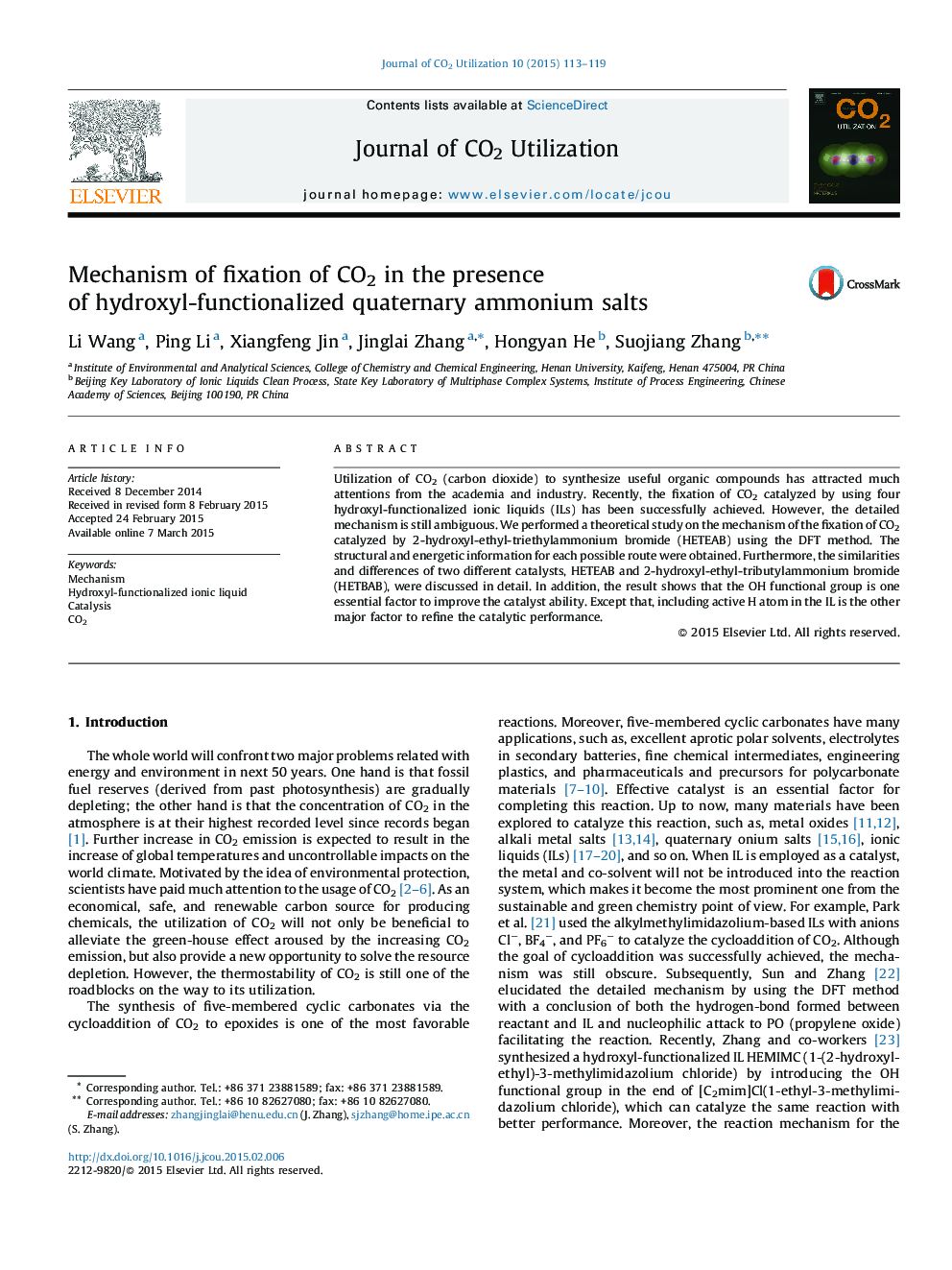| Article ID | Journal | Published Year | Pages | File Type |
|---|---|---|---|---|
| 63569 | Journal of CO2 Utilization | 2015 | 7 Pages |
•Elucidate the mechanism of catalyzed cycloaddition of CO2 with epoxide.•Understand the reasons for high reactivity of hydroxyl-functionalized ionic liquid.•Explore the influence of different anions on the reactivity.
Utilization of CO2 (carbon dioxide) to synthesize useful organic compounds has attracted much attentions from the academia and industry. Recently, the fixation of CO2 catalyzed by using four hydroxyl-functionalized ionic liquids (ILs) has been successfully achieved. However, the detailed mechanism is still ambiguous. We performed a theoretical study on the mechanism of the fixation of CO2 catalyzed by 2-hydroxyl-ethyl-triethylammonium bromide (HETEAB) using the DFT method. The structural and energetic information for each possible route were obtained. Furthermore, the similarities and differences of two different catalysts, HETEAB and 2-hydroxyl-ethyl-tributylammonium bromide (HETBAB), were discussed in detail. In addition, the result shows that the OH functional group is one essential factor to improve the catalyst ability. Except that, including active H atom in the IL is the other major factor to refine the catalytic performance.
Graphical abstractFigure optionsDownload full-size imageDownload as PowerPoint slide
